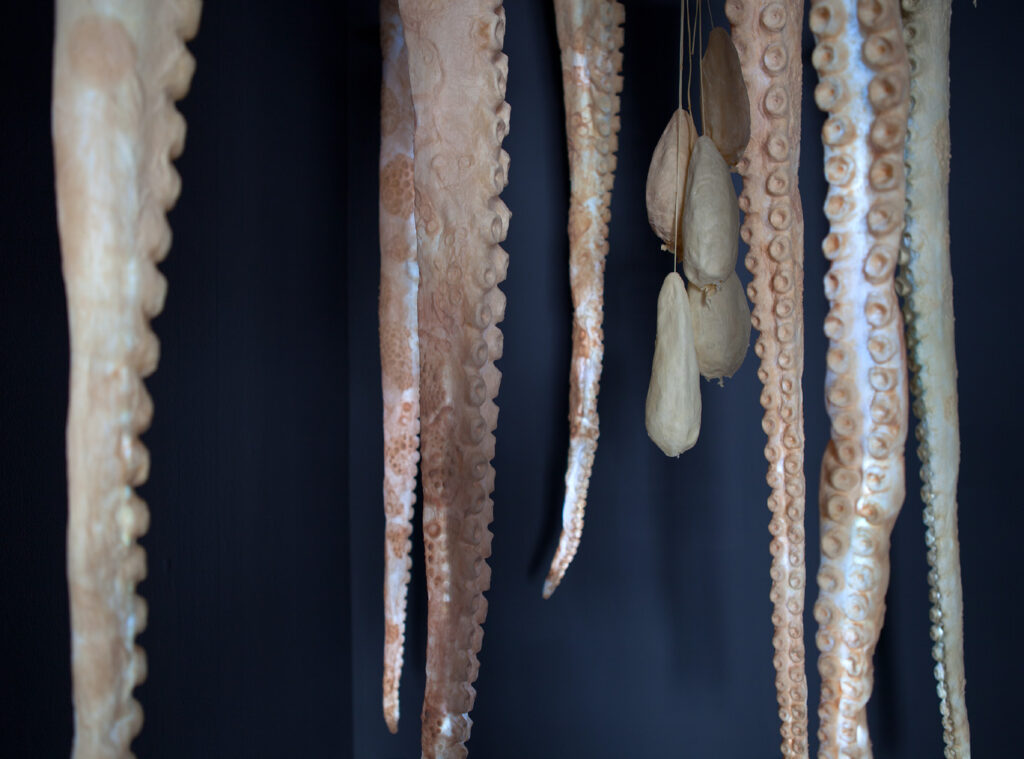
mOwson&MOwson, feeler, 2019 (installation detail, photo: Heidi Pfohl)
The life of octopuses ends within senescence, a phase of terminal decay unrelated to disease. Skin retracts from around their eyes, white lesions build on the body that fail to heal, they stop eating, movements become uncoordinated and their activities undirected. In female octopuses this phase has a tragic-heroic quality. After mating, she carries her eggs inside her, sometimes for months, and when the conditions are right, she will expel the eggs. She then gathers the eggs into groups, sometimes stitching them into braids before adhering them to a surface. While she might eat for a few days after laying her eggs, she then enters a period of fasting while she stays with the eggs: protecting, touching, fanning and grooming. This period of care can be lengthy – the longest documented to date is over four and a half years. During this time the changes to her body are visible, her skin loses color and definition, and she will die shortly after the eggs hatch.
At first sight, the limbs of mOwson&MOwson’s feeler are reminiscent of an octopus mother’s den and its braids of eggs. Yet as arms, they reference a troublingly absent octopus head. Their frayed ends tell stories of their violent separation from their body and wires hooked into their flesh that drag them into the open from hiding places under rocks to end as endless rows of octopus bodies strung up on racks and left to dry in scorching sun. There is a race to make the farming of octopuses viable to deal with a so-called protein crisis that is projected to result from the growing environmental catastrophe that collapses human animal-based systems of food production. The mother’s eschewal of all food couldn’t contrast more with the pains humans are at to carry over the catastrophe their habit of ingesting other animal life.